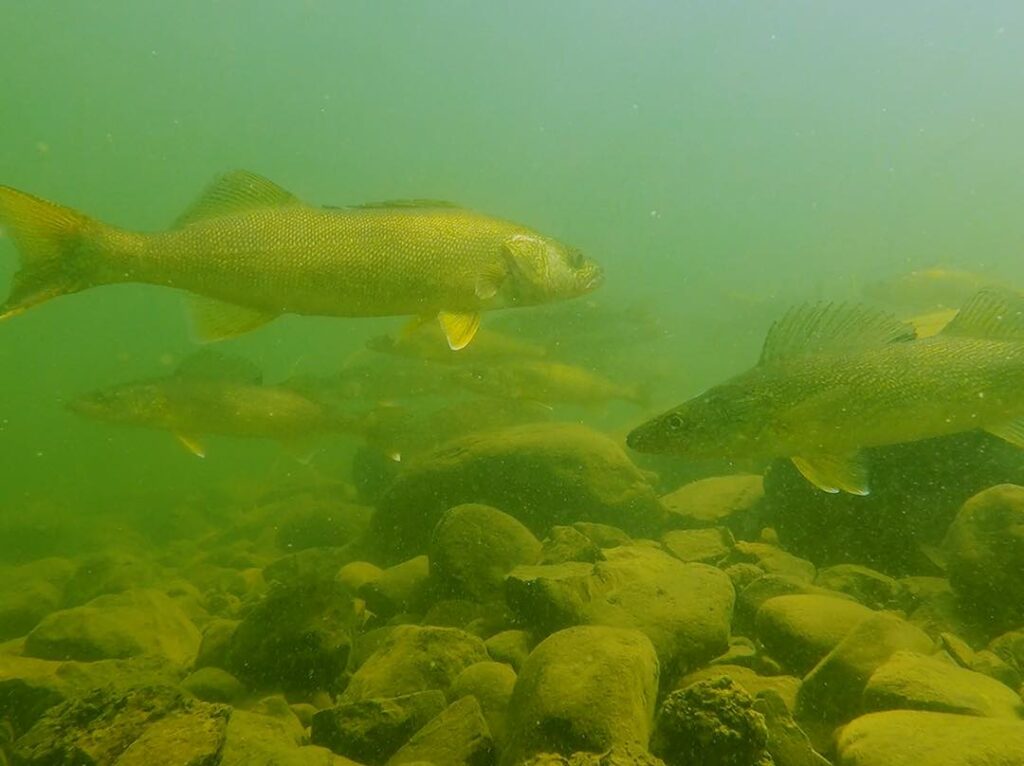
Riprap locations on many lakes, rivers and reservoir hold walleye particularly during the spring but can be good throughout the year. What makes riprap so productive for spring walleye? Riprap is often used on roads, causeways, near bridges or along dam faces to protect steep grades from erosion. These riprap locations are often a hot bed for spawning activity. Walleye often seek out hard bottoms with some current for spawning. That is exactly what riprap offers. We often find walleye relating to riprap well before the spawn and these locations will often hold remnant populations of males long after the spawn is over.
Riprap can come in a lot of different sizes and shapes, but the best areas often seem to have a mix of rock sizes coinciding with some wave action or moderate to slow current. In these types of locations, the contour maps will often be pretty uniform with a sharp set of contour lines dropping into deeper water, but the sweet spots often take some real-life exploration. There will be areas where the rocks drop down into deeper water extremely fast while there will often be short little stretches where the rocks seem to pile up and form little shelves, bumps or inside turns next to shore. Bottom line is that there might be a mile of riprap on a causeway, but there will be magical fifty yards stretches that simply fish better.
Spring walleye are often shallow when using riprap, especially when the water temperature starts to creep into the low forties. We often catch fish in a few feet of water and sometimes less. There are times when we throw the crank or jig up onto the rocks and the fish hit the bait soon after it hits the water.
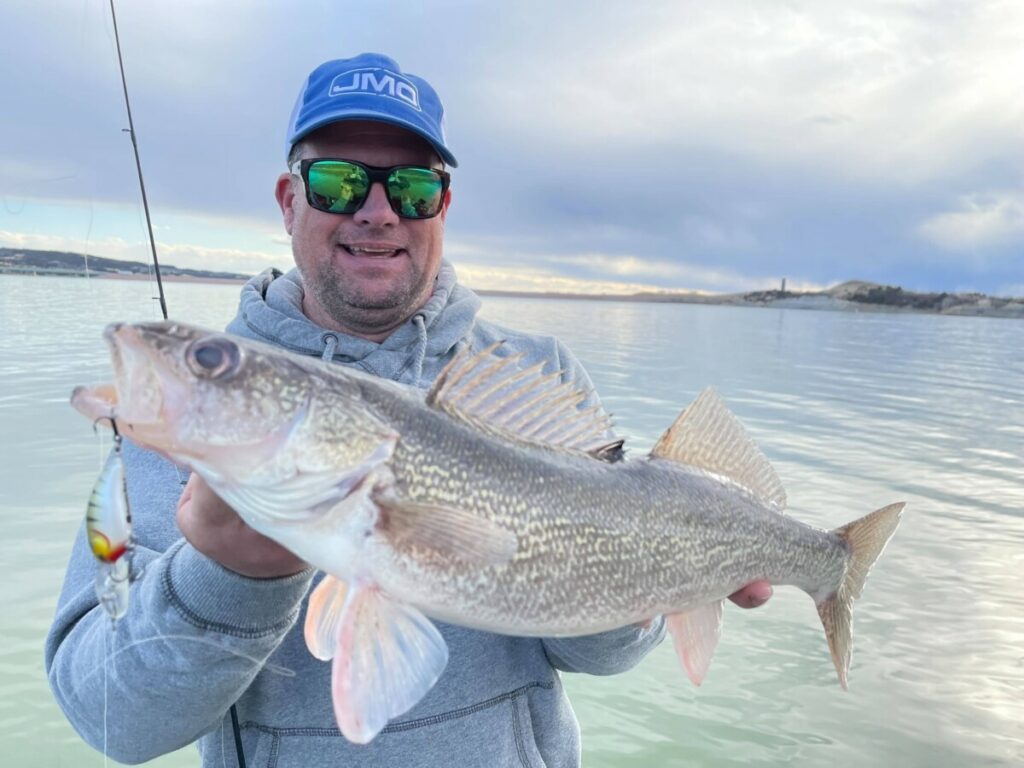
Best Presentations for Fishing Riprap Walleyes
You can pitch jigs, swim baits or crankbaits on riprap with a lot of effectiveness and the right presentation can not only be dictated by the mood of the fish but also the size of rock and the slope. On riprap with a sharp drop off into deeper water where large rocks are present, few things can work as well as a crankbait because a crankbait can often stay out of snags much better than jigs or even swim baits.
Casting angles can be extremely important when fishing riprap. Standard procedure is to hang the boat a cast away from land and to cast towards shore. When the fish are holding in five feet of water or less however, much of the cast is wasted where the lure or bait is not going in front of fish. Experiment with your angles where you nose the bow of the boat up closer to shore and cast parallel along the rocks. This angle can also be applied to anglers fishing from shore. Cast down the rocks so your bait stays in the shallow water close to shore for longer periods on each cast if you are finding most of the fish in less than five feet of water.
On long uniform stretches of riprap, trolling crankbaits can also be extremely effective. Planer boards can also be used at times when fish are close to the bank or shallow, but I find that when fish are that shallow, I often catch more fish by casting.
Riprap locations have been very productive for us this spring in particular. We have had a lot of wind and cold weather mixed in with lagging water temps that just don’t seem to warm up. We have also had snow and precipitation that has muddied up the water. The spawn has been drug out over several weeks instead of a handful of days. These types of conditions can put prespawn females into a serious funk, but the males often tend to be more aggressive and less affected by some of these conditions. When we have simply wanted to catch fish, riprap locations have been very productive. To be exact, casting rip rap with crank baits has been one of our go to patterns this spring.
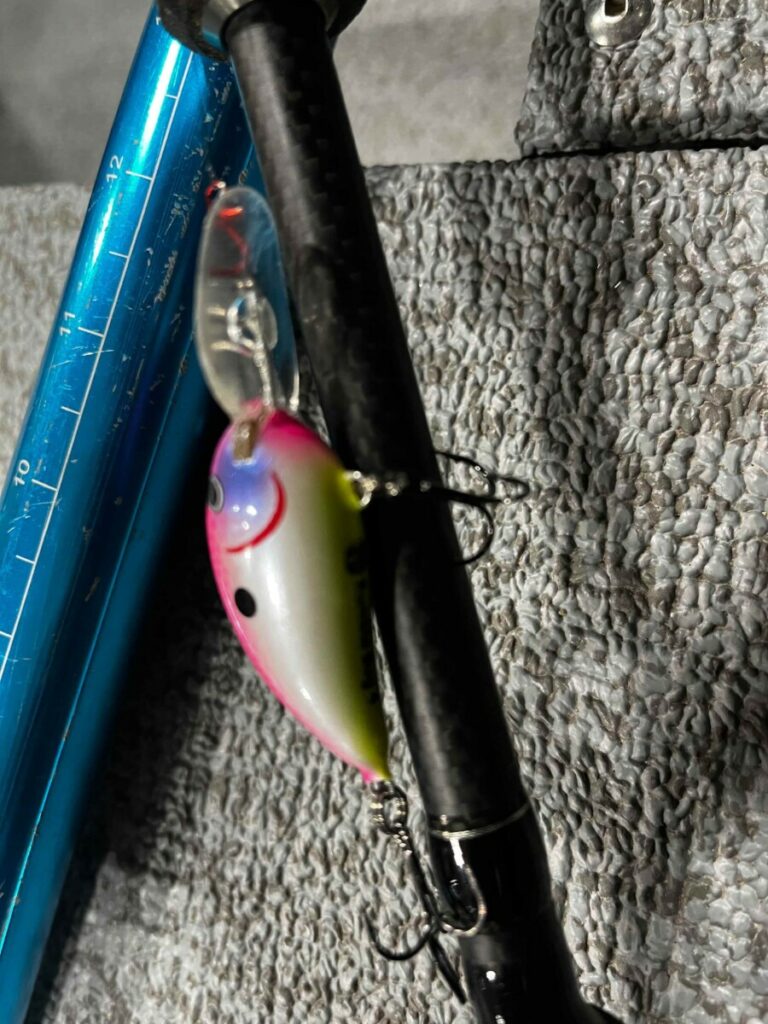
Many different crankbaits will work, and productive lures and colors can vary from fishery to fishery but early in the year with cold water temperatures, I prefer balsa lures or very subtle action plastic lures. For trolling or working shallow water, classic lures include number 11 Floating Rapalas and Rattling Rogues. For cranking down riprap when casting, number five to seven size Rapala Shad Raps have caught a lot of walleyes. Another lure I fell in love with this spring has been the new Northland Fishing Tackle Rumble Bug. This lure is made out of balsa and has a nice delicate action for cold water but what also makes this lure special is the shaved bill design that accelerates the dive curve. What this shaved bill allows you to do is crank the lure down quickly with a few cranks and then slow the bait way down so you spend more time in the strike zone. Part of catching fish on a crank is having confidence so you use it and the more you use it… the more fish you catch with it, but we have been throwing the Rumble Bug a lot this spring and catching a lot of fish with it.
Jigs tipped with plastics can also shine on riprap but again, staying out of snags often means finding the right weight or sink rate with the right retrieve speed so that you are swimming the jig back through the rock. We often start out with the person in the front of the boat throwing a crankbait while the person in the back throws jigs and plastics to see what the fish want. There are times when the fish will prefer one over the other but lately, it has been all cranks for the win for us.
Riprap is consistent. There will often be better locations and there will often be other anglers fishing these locations and some of these riprap locations can indeed be community spots. These locations however can be a really safe bet to catch walleye, particularly when the weather and conditions you are fishing become more inconsistent. Riprap seems to shine when you need to catch fish in tough conditions.

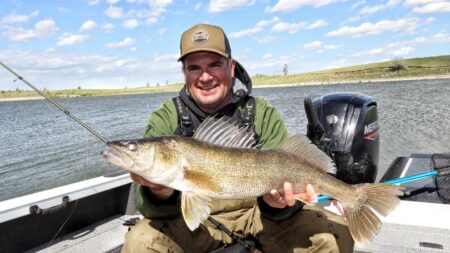
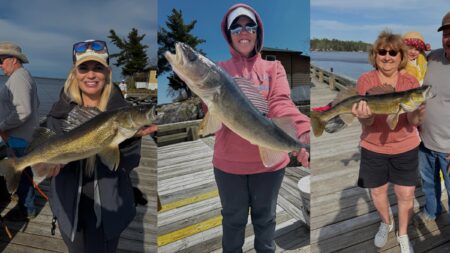
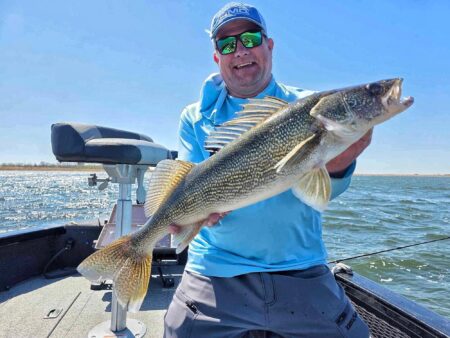

1 Comment
Jason, I find this article to be very motivating! I’ve driven over rip rap causeways very frequently wondering why no one was fishing these. There is one particular causeway with a bridge that has a good current area on a local reservoir. Another with major riprap that forms a dike. I will be working both of these areas this spring. Wondering if you notice any shallow/deep patters or better bites when there is a good breeze/wind blowing into the riprap? Thanks.